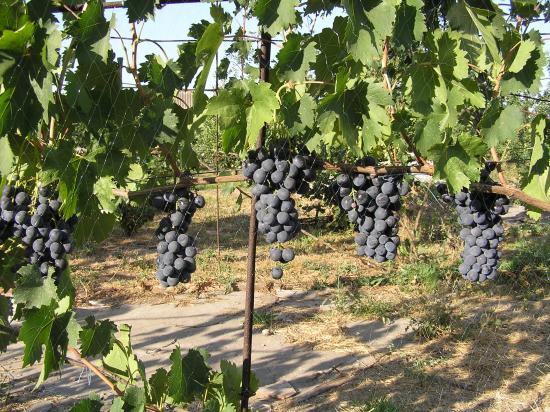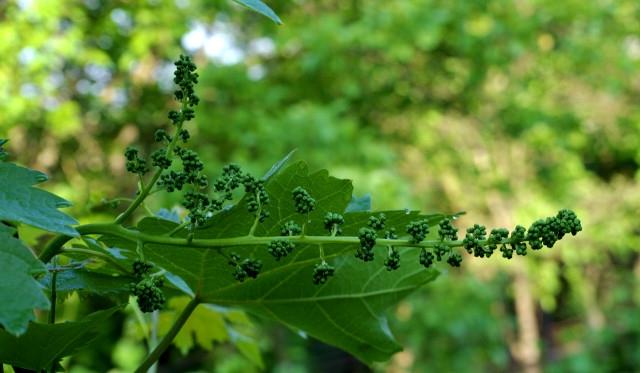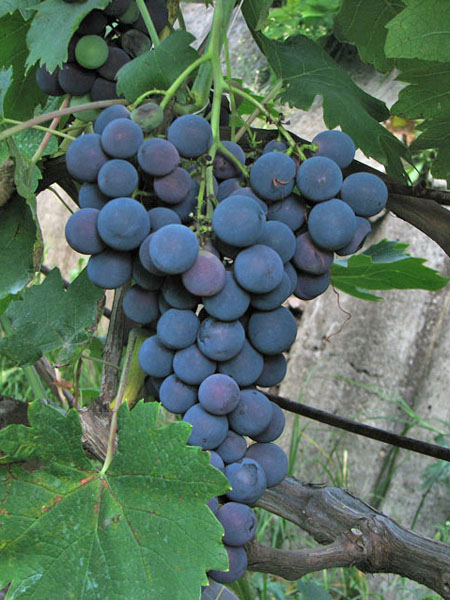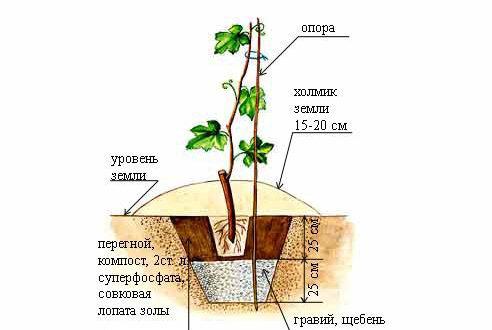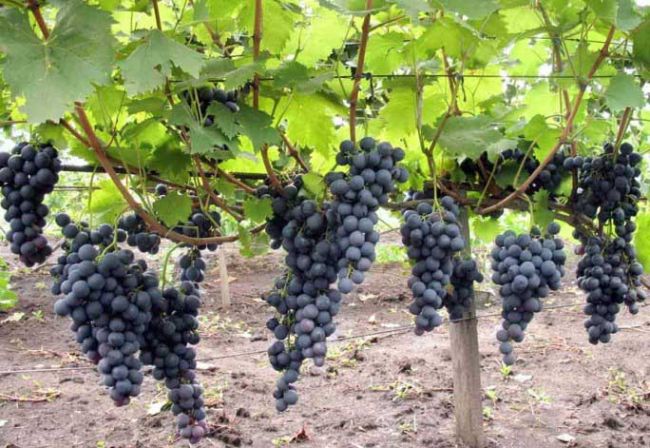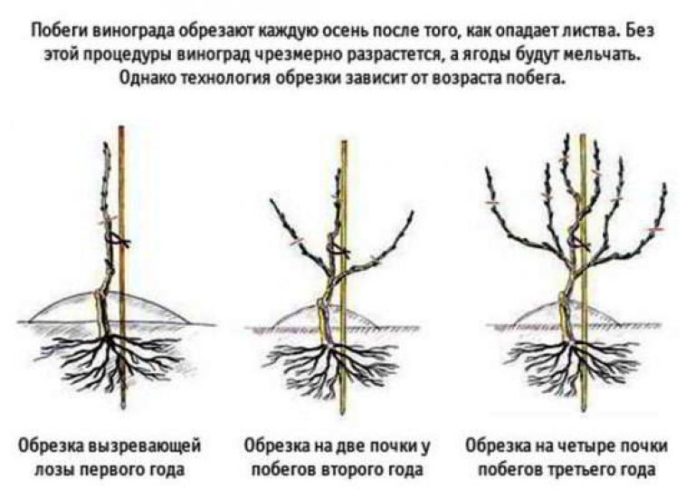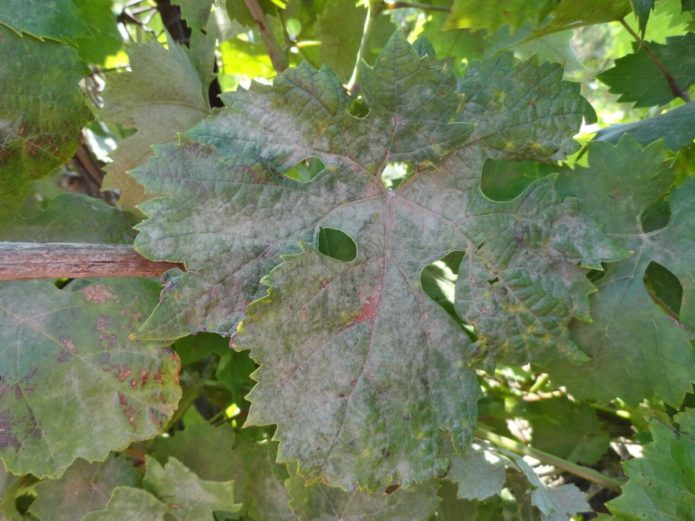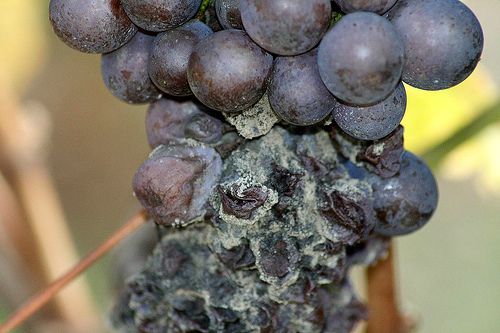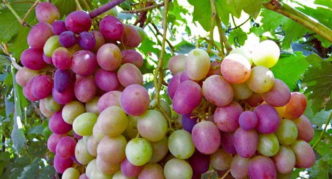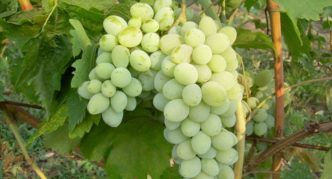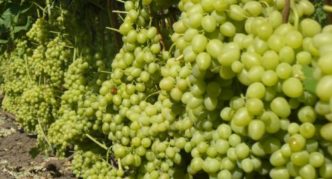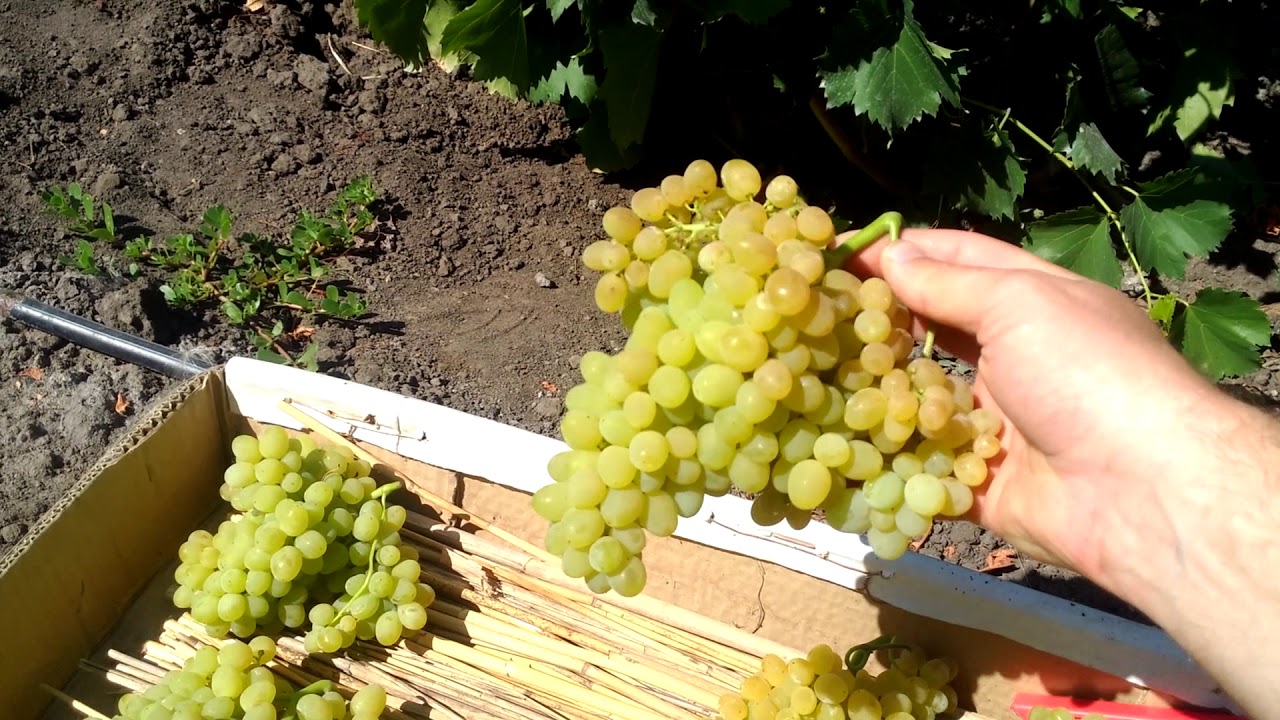A country idyll is presented in the form of delicate clusters of grapes hanging from a dense leafy canopy. Moreover, the bunches can be of a wide variety of shades. For example, the Strashensky grape belongs to varieties with almost black, as if dull from a wax coating, berries.
Content
Breeding history, description and characteristics of the Straseni grape variety
The Straseni grape variety is relatively young, created by Moldovan winegrowers in the seventies of the last century. Included in the State Register in 1989 and recommended for cultivation in the North Caucasus region. It is also cultivated in the Crimea.
The variety is of medium ripening. Usually the berries are completely filled with sweet juice by mid-September. The variety is medium-sized. The vine ripens well. The shoots are strong, each can withstand the weight of up to 1.2 kg of the crop, thanks to which the plantings of this variety are impressive with their beauty.
The leaves are large, medium dissection. Bottom covered with dense pubescence. The flower raceme is large, with bisexual flowers, up to 30 cm long. The variety is characterized by long flowering and ripening of the bunch, therefore, to accelerate the ripening of the crop, some experts advise to shorten the brush by a third.
Massive cylindrical-conical clusters hang on a long stem. Their weight ranges from 600-900 g, there are also giant bunches weighing 1.5 kg.
The berries are large, flattened-rounded, loosely located on the brush. The weight of one fruit is 7-10 g, the largest ones reach 12 g. The skin is of medium density, colored in a dark purple color, with a pronounced waxy bloom. Some gardeners note that the berries crack with excessive watering or prolonged rains. Bunches do not tolerate transportation and storage.
The pulp is crispy, juicy, colorless, but the juice and wine from the Straseni grape variety have a rich noble color. If you crush the berries, very soon the skin pigments will color the juice. Each fruit contains 2-3 seeds.
Table variety. Experts characterize the taste of Strashensky grapes as simple but harmonious, giving fresh berries 8 points out of 10. The fruits are consumed fresh, and they are also used to prepare juices, compotes, wine and natural wine vinegar from them.
Cut shoots are used for grafting or as brushwood. Young green leaves are pickled and used in the preparation of traditional Caucasian dolma.
When describing the variety, an increased resistance to mildew is noted. Straseni grapes are moderately resistant to other diseases, as well as to pests: spider mites and phylloxera. Gardeners note that birds and wasps are big fans of dark juicy berries and worsen the presentation of the bunches.
The yield is high. With competent agricultural technology, almost 30 kg of berries are harvested from one bush, or 197.3 c / ha. If you are late in harvesting a ripe crop, the bunches can be affected by gray rot.
Drought resistance and winter hardiness of the vine is average. Needs shelter for the winter.
Video: grape variety Strashensky
Features of planting and cultivation of the Straseni grape variety
The most sunny and calm areas are distinguished under the bushes. Providing sufficient light, the bunches will ripen evenly and pour sweet juice. Sunlight and heat also prevent the development of fungal diseases in grapes.
It is important to pay attention to the level of occurrence of groundwater, since the roots of grapes do not tolerate stagnant water and rot in conditions of excess moisture. Planting holes are located at a distance of 2.5–3 m from each other, since the plant has a powerful growth force. The same distance is left between the rows. Bushes for better illumination are oriented from north to south.
The soil of the North Caucasus region is usually light and does not need drainage, but if necessary, a drainage layer should be provided at the bottom of the planting pit. Limestone crushed stone or broken brick is suitable as it.
Grapes are planted in spring and autumn. You need to pay attention to the readiness of the soil. When planting in spring, the soil must be warm enough to be able to plant the cutting. If the ground warms up to +10aboutC, proceed to planting. Cherry blossoms on the site can serve as a signal of soil readiness.
For landing:
- Dig a hole 45–50 cm deep, and drain it if necessary.
- It is filled with organic fertilizers: compost, humus, rotted horse or cow manure in a 1: 1 ratio to the soil. Organic fertilizing contributes to the formation of plant immunity, increases its resistance and makes it possible to grow a healthy crop. When providing the bushes with sufficient nutrition in the planting pit for the next few years, you do not need to think about fertilizers. To enrich the soil with potassium, 500 ml of ash is added to each well.
- A cutting is placed in the middle of the hole, spreading the roots, and covered with soil mixture so that no more than a quarter of the cutting height rises above the ground.
- The soil is tamped, forming an irrigation hole, and watered abundantly with warm water.
- The trunk circle is mulched.
In dry and hot weather, you need to ensure that the soil does not dry out. The vine has a powerful growth force and needs the construction of trellises for normal development.
When growing Strashensky grapes, it is recommended to shorten the flower cluster so that the clusters ripen at the same time. In addition, whole inflorescences can be removed, forming a future crop, so that the bush provides the remaining clusters with nutrients in the right amount.
When removing stepchildren and cutting off shoots, it is necessary to leave hemp, so wound healing goes without problems.
The optimal solution so that the berries do not become smaller in the future is pruning into 4 buds.
Good prevention of mildew damage will be provided by three-time processing of grapes with Bordeaux liquid: in early spring, at the beginning of flowering and a month before harvest.
To prevent damage by rot, it is recommended to collect ripe bunches in time and not leave them for long-term storage. Installing bird drinkers and safety nets can reduce crop losses due to insects.
Advantages and disadvantages of the variety
Each grape variety has its own distinctive characteristics. For Strashensky it is:
- great strength of growth;
- high productivity;
- large clusters and berries;
- decorativeness of bushes with ripe bunches;
- resistance to mildew and pests: spider mites and phylloxera.
For an objective assessment of the characteristics of the variety, it is worth noting that the great vigor of the vine leads to certain inconveniences associated with the need to build trellises or other supporting structures.
High yields along with poor transportability and short shelf life are also not the best combination. It takes time and extra effort to preserve and process the fruit.
An advantage of the variety can be considered an average resistance to drought and low temperatures. Some sources indicate that the Straseni grape vine can withstand frosts down to -24aboutFROM.
Notable disadvantages of the variety:
- long maturation of brushes;
- cracking berries;
- poor transportability;
- unexpressed taste;
- susceptibility to gray rot.
Of the table grape varieties included in the State Register for the North Caucasus region, in terms of ripening, they are close to the Straseni grape varieties:
- Caramol is a high-yielding variety. Disease resistance is average, hides for the winter. The bunch weighs 300 g. The berry is large, weighing 5.2 g, covered with a dense amber skin.
- Lyana is a high-yielding variety with above average winter hardiness. Relatively resistant to disease. The weight of the bunch is 200–250 g, the weight of the berry is 4–5 g. The skin is thin, greenish-yellow.
- Derbent Muscat is a high-yielding variety with medium resistance to diseases and pests. Average winter hardiness. The bunch weighs 180 g. The berry is large, weighing 5 g. It is covered with thick greenish-yellow skin with a pink tint. The taste is pleasant, with a pronounced nutmeg aroma.
- The talisman is a vigorous variety. Highly resistant to frost and mildew. Productivity 69.7 kg / ha. The mass of the bunch is 450 g. The berries are large, white. Tasting assessment of fresh fruits - 8.2 points.
With all the variety of the given varieties, none of them surpasses the Straseni in terms of the size of the bunch and the total yield. And its dark berries give the juice of a noble wine color. Many gardeners believe that the Strashensky grape, for all its shortcomings, belongs to the basic varieties and when cultivating this crop it is necessary to have several bushes on the site.
Photo gallery: grape varieties close in terms of ripening to Strashensky
- Grape Caramol is considered a high-yielding variety
- Liang grape bunches reach 200-250 g
- Grape Mascot is a vigorous variety
Variety reviews
Much has been written about Strashensky on the site. I rarely leave shoots, after 20-25 cm, since the leaf is large. Before flowering, I leave one inflorescence for the shoot, pinch it by a third. As soon as the first caps fall off, I pinch the shoot. I don't count the nodes, just remove the top. I constantly pinch my stepchildren onto one sheet. Before ripening, on August 10, I mint the shoots. Drip irrigation, top dressing, including on the sheet.
I agree that Strashensky is not so terrible. Do not thicken it, shorten it by a third during flowering, and let it run in two shoots (from the stepson) over the brush, which I did this year. It matured in early September and began to eat. Shot completely in the middle. It's good that there was no rain, otherwise last year I tried to crackle. It tastes good.Well, the view is without significant criticism. We will continue to grow.
I have Strashensky "succeed" in about a year. The berries are poured, become hard, the peel breaks easily and the taste is, it seems, the same herbal, but quite pleasant (for me). And in other years this does not happen - the grass is grass. Sincerely.
In the description they write that Strashensky has a simple taste. And I really like its taste. It is very important to let him get back to normal conditions, then he becomes very sweet, like honey. Here are just such bunches, as in the above photo, have not yet been. True, the bush is still young.
As for me, its taste is not easy ... This is most likely the case when one could call it VARIETY. In any case, I no longer had grapes with a similar taste.
The Strashensky grape is picky about growing conditions, but it is able to thank for the care with a generous harvest of juicy bunches. In autumn, dark berries on the brushes, contrasting with the emerald green of the foliage, attract the satisfied gaze of guests and hosts.
